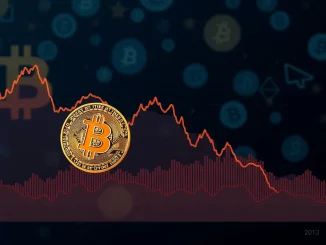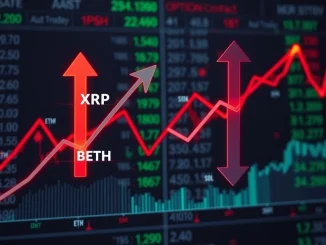
In an era marked by unpredictable global events and economic shifts, investors are increasingly seeking assets that can withstand turbulence. Traditionally, gold has been the go-to safe haven. However, a new contender is rapidly gaining prominence: Bitcoin. The narrative around Bitcoin safe haven status is strengthening, driven by significant macroeconomic and geopolitical factors.
Why is Bitcoin Emerging as a Safe Haven?
The shift towards considering Bitcoin as a reliable store of value is not happening in a vacuum. It’s a complex interplay of market dynamics, changing investor perceptions, and global instability. One key perspective comes from financial giants like BlackRock.
According to insights shared by BlackRock’s Jay Jacobs, cited by Cointelegraph, Bitcoin’s performance is showing increasing independence from traditional U.S. equity markets. This decorrelation is a critical characteristic of a safe-haven asset. When stocks tumble, investors look for assets that either hold their value or appreciate. Bitcoin’s growing tendency to move independently of indices like the S&P 500 makes it more appealing in this context.
Geopolitical Tensions Fueling the Shift
A major driver behind this trend is the current global geopolitical landscape. Rising tensions between major world powers are causing central banks and large state-backed entities to re-evaluate their reserve holdings. Historically, U.S. Treasuries have been a staple reserve asset globally. However, concerns related to sanctions risk and political stability are prompting a diversification away from dollar-denominated assets.
Central banks, particularly those in countries like China, have reportedly been reducing their exposure to U.S. debt. Where are they turning? Alongside traditional safe assets like gold, there’s growing evidence of interest in alternative stores of value. This is where geopolitical tensions directly intersect with the narrative of Bitcoin adoption.
Institutional Investment and the Search for Uncorrelated Assets
The search for assets uncorrelated with traditional markets is a constant pursuit for large funds and institutional investors. As global instability increases, the need for such assets becomes more urgent. The original content highlights that the shift towards gold and Bitcoin began years ago but has accelerated recently due to heightened global uncertainty.
This acceleration is closely linked to increased institutional investment interest in the cryptocurrency space. The approval of spot Bitcoin ETFs in the U.S. earlier this year was a landmark event, providing a regulated and accessible pathway for institutions to gain exposure to Bitcoin. These institutions are not just speculating on price; many are exploring Bitcoin’s potential role in portfolio diversification, especially given its low correlation with traditional assets during certain market cycles.
Bitcoin vs. Gold: A Modern Comparison
For centuries, gold has been the ultimate safe haven, a reliable store of value through wars, economic crises, and inflation. The comparison between Bitcoin gold is natural and increasingly relevant. Both assets exist outside the direct control of any single government or central bank, offering a degree of censorship resistance and independence.
While gold has a long history and tangible form, Bitcoin offers digital scarcity, portability, and divisibility. Its transparent yet pseudonymous ledger operates 24/7 globally. Although Bitcoin is significantly more volatile than gold, its unique properties and potential for high returns, combined with its growing decorrelation from traditional markets, are making it an attractive alternative or complement to gold for a subset of investors, including institutions.
BlackRock’s Perspective on Bitcoin
When a firm the size and influence of BlackRock comments on an asset, the market listens. Jay Jacobs’ observation about Bitcoin’s growing independence from U.S. equities underscores the serious consideration being given to Bitcoin by major financial players. BlackRock’s own foray into offering a Bitcoin ETF (IBIT) further validates this institutional interest and provides a tangible example of how major firms are facilitating access to BlackRock Bitcoin products for their clients.
Their view reinforces the idea that Bitcoin is maturing as an asset class and is being evaluated based on its fundamental characteristics and potential portfolio benefits, rather than just speculative hype.
Challenges and the Road Ahead
Despite the growing narrative, challenges remain. Bitcoin’s volatility is still a concern for many risk-averse investors. Regulatory uncertainty, while improving in some regions, persists globally. However, the fundamental drivers – geopolitical shifts, central bank actions, and increasing institutional acceptance – suggest that the trend of Bitcoin being considered a safe haven asset is likely to continue.
Conclusion
Bitcoin’s journey from a niche digital curiosity to an asset considered alongside gold by major financial institutions like BlackRock highlights its evolving role in the global financial system. Driven by accelerating geopolitical tensions and the subsequent search for uncorrelated assets by central banks and institutional investors, the case for Bitcoin safe haven status is becoming more compelling. While it still faces hurdles, Bitcoin’s unique properties position it as a significant contender in the modern investor’s quest for security and stability in an uncertain world.



